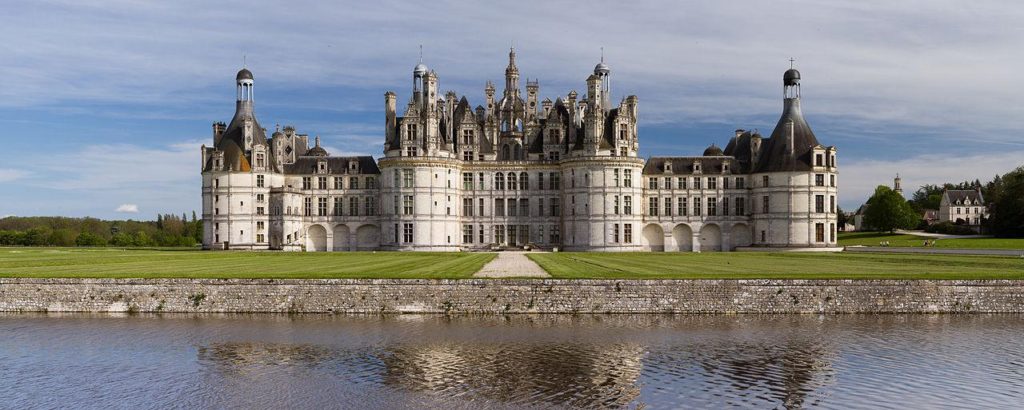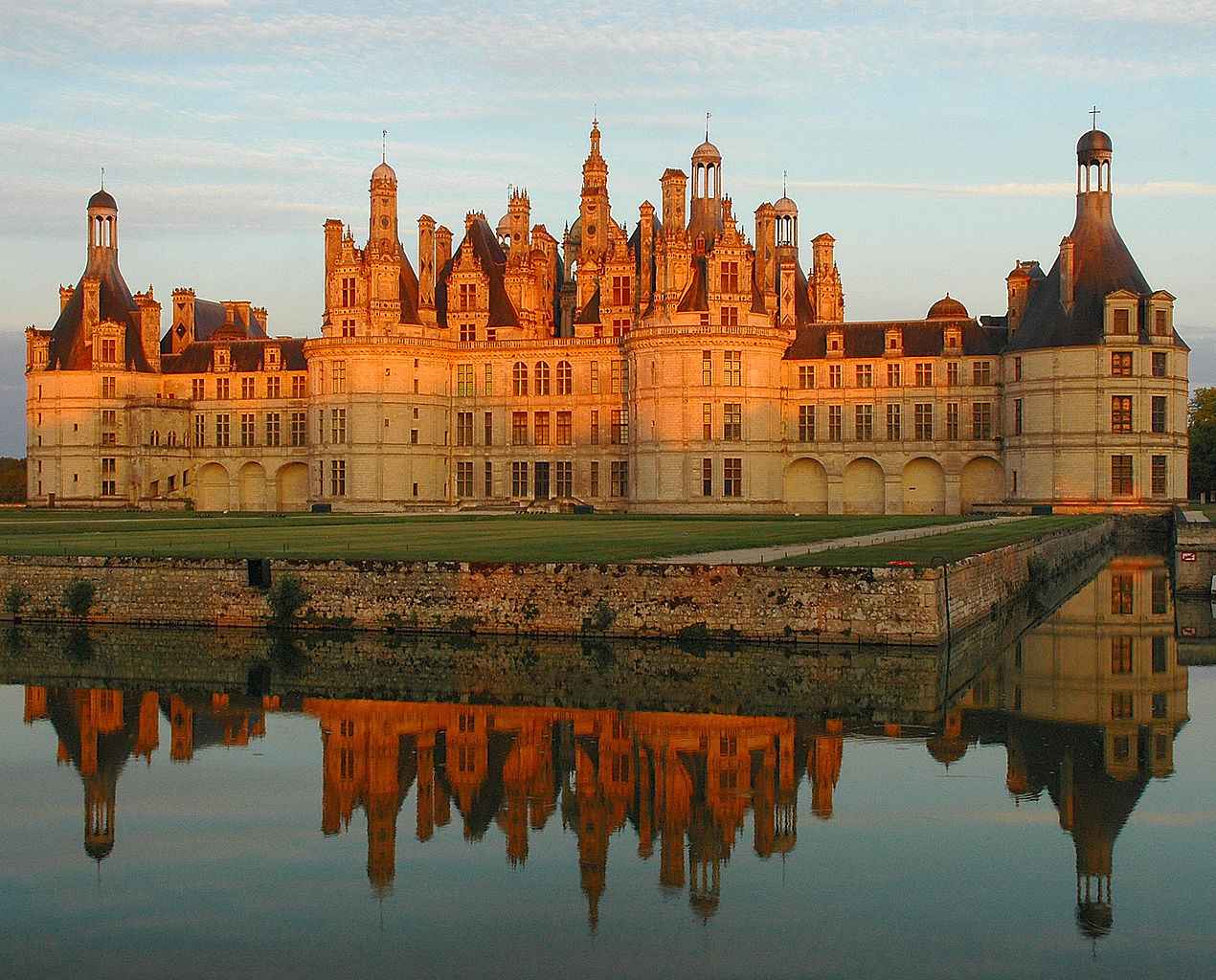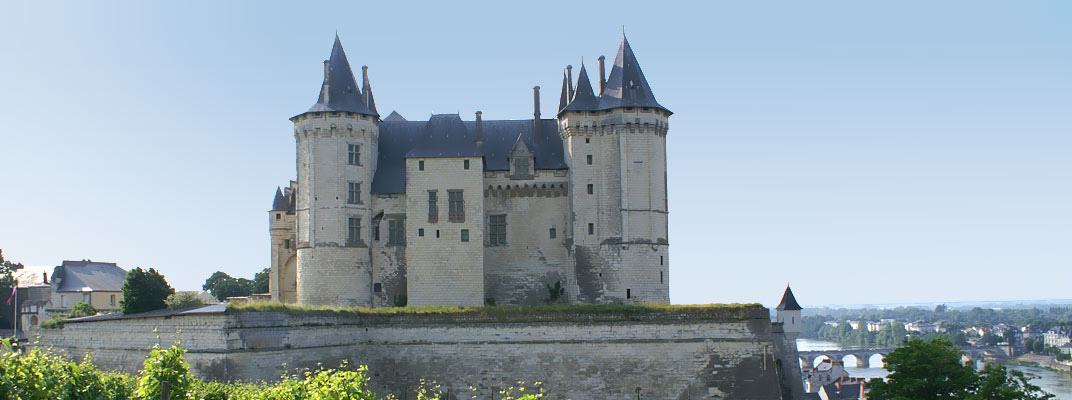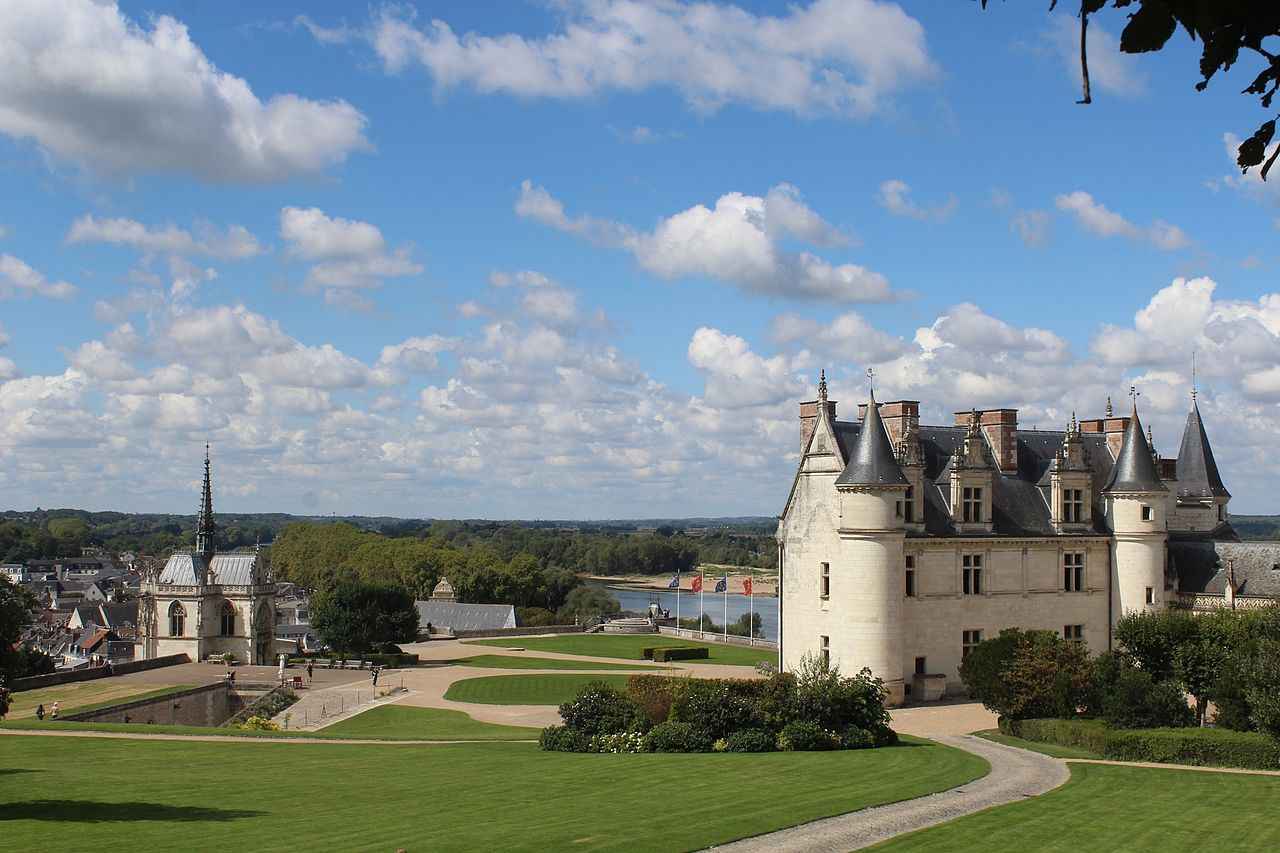Château de Chambord is a royal chateau in Chambord, France and is easily one of the most well-known chateaux in the world. It is famous for blending traditional French medieval styles with that of the styles popular during the Renaissance period.
Its construction began at the behest of King Francis I of France. Francis I wanted the chateau to serve as his hunting lodge. There is a bit of contention as to who actually designed the chateau, with many stating it to be Domenico da Cortona, though some would say Leonardo Da Vinci had a hand in its design.
The chateau has a long history of being altered on several occasions during its long construction. By 1981, the chateau was designated as a UNESCO World Heritage Site.
Royal Origins
Many would say that the chateau was designed by Domenico da Cortona, who had a wooden model that was later drawn by Andre Felibien. Jean Guillaume noted that the original Italian design of the chateau’s staircase was later on modified to feature a central spiral staircase. This is noted as being more in line with the French preference for a grand staircase, something that can also be found at Blois.
However, there is compelling evidence to show that it was actually Leonardo da Vinci, and not Cortona, who should be credited with the design of Château de Chambord.
The Da Vinci Connection
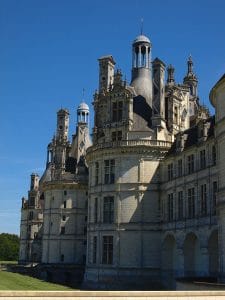 During the 1910s, Reymond Marcel’s article Leonardo da Vinci, architect Chambord asserted that it was in fact Leonardo da Vinci who was responsible for designing the chateau. In his article, Marcel claims that it reflects the Renaissance Man’s design for a different chateau. Specifically, the design is similar to that of the design for the chateau found in Romorantin.
During the 1910s, Reymond Marcel’s article Leonardo da Vinci, architect Chambord asserted that it was in fact Leonardo da Vinci who was responsible for designing the chateau. In his article, Marcel claims that it reflects the Renaissance Man’s design for a different chateau. Specifically, the design is similar to that of the design for the chateau found in Romorantin.
The chateau at Romarantin was planned as a gift by Francis for his mother. It should be noted that Leonardo was a favored guest of King Francis I. At that time, Leonardo resided in Clos Lucé under the auspices of King Francis I. Special notice was given on Leonardo’s interest in double spiral staircases and central planning.
In addition to the evidence submitted above, Dominic Hofbauer and Jean-Sylvain Caillou discovered archeological findings that show there is a lack of symmetry in the facades. This indicates that the facades were derived from an original design, but were then abandoned a short time after construction was underway.
To strengthen their case, the two state how the staircase had a rotative design. This particular element of the staircase was completely original for its time. The rotative design element is reminiscent of Leonardo Da Vinci’s work on the helicopter and hydraulic turbines.
Despite the strong evidence presented in favor of this Da Vinci connection, the discussion has not yet reached a conclusion. However, most respected scholars do agree that the evidence shows that Leonardo must have had, at the very least, collaborated on the chateau’s design.
The Man Who Built the Château de Chambord
What is not open for debate, however, is the man responsible for building the chateau. The man credited for chateau’s construction is Francis Pombriant, who began his work in 1519. The chateau’s long history of construction and alterations was a result of difficulty in laying the foundation and dwindling royal funds. Work was so slow that five years after construction began, the walls were scarcely above ground level.
The King’s Visits
As mentioned, King Francis I initially intended for the chateau to be his hunting lodge. However, the king rarely visited the chateau. Historical accounts show that the king visited the chateau for short hunting trips for as much as seven times only. King Francis I rarely stayed at the chateau for long. Originally built for short hunting trips, it was not practical to stay in the chateau for a long time.
French Revolution and Modern History
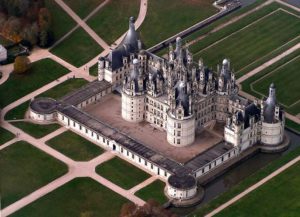 Doom almost fell upon the chateau during the French Revolution, when it was largely stripped of its timber and furnishings to be sold for value. The chateau remained abandoned until the time of Napoleon Bonaparte, who gave it to one of his subordinates, a man by the name of Louis Alexandre Berthier.
Doom almost fell upon the chateau during the French Revolution, when it was largely stripped of its timber and furnishings to be sold for value. The chateau remained abandoned until the time of Napoleon Bonaparte, who gave it to one of his subordinates, a man by the name of Louis Alexandre Berthier.
The chateau was then bought for Henri Dieudonné, the Duke of Bordeaux. The Duke’s grandfather, King Charles X, made a short-lived attempt of restoring the chateau before he and his grandson were both exiled. It would later see use as a field hospital during the Franco-Prussian War of 1870.
During World War II, many of the Louvre’s paintings were actually stored at the chateau. These works of art were nearly lost when a B-24 Liberator crashed on the chateau’s lawn.
Today, most people know Château de Chambord for its image, which has been used to sell a wide variety of different products like alarm clocks, alcohol, and even chocolate.



